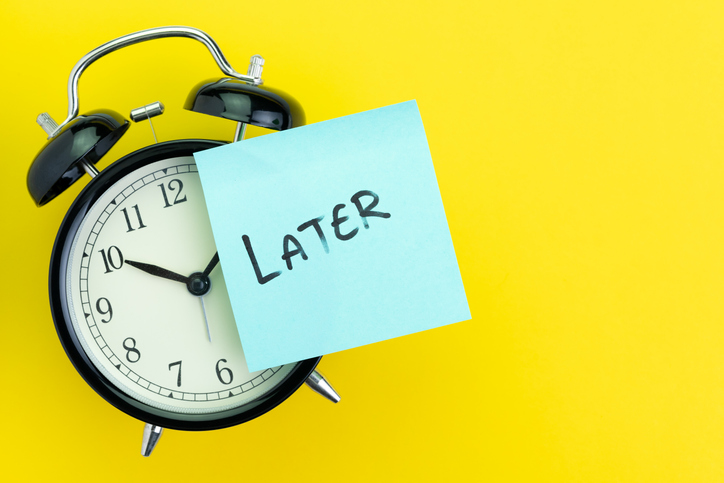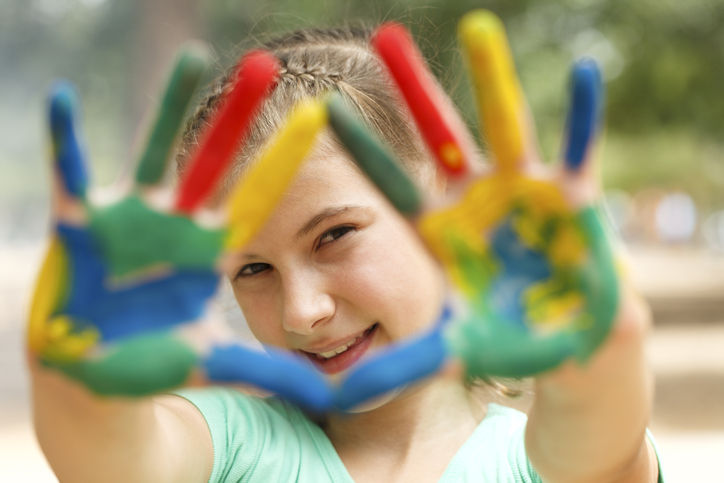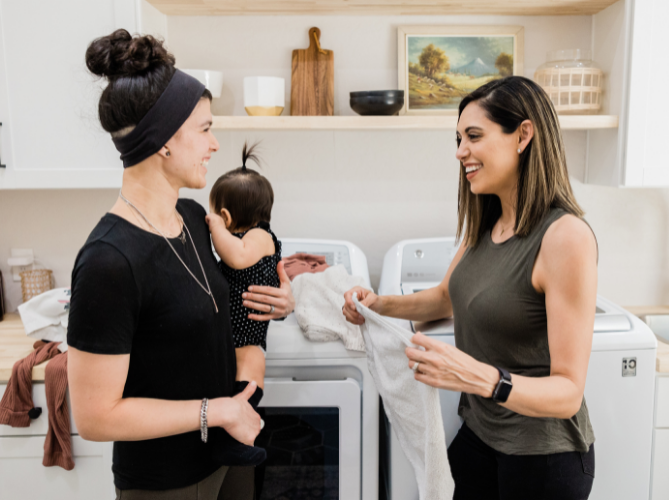 Happy New Year! As we welcome 2022, it’s natural for most people to consider what worked last year and what you’d like to do differently in the months to come. You might be considering how can you reduce work or family stress and improve the ease in daily living. However, many of us have realized that New Year’s Resolutions often fail–because people aim for too much change, set unrealistic expectations about happiness, and/or struggle with how to follow through on their goals. For folks living with ADHD, it’s especially tough to break down goals into achievable chunks and identify necessary steps for meeting them. Fortunately, working together as a family can make a big impact for everyone. Here’s how you can help your family work together to identify, create and maintain meaningful new habits in the year–with collaboration, accountability and encouragement.
Happy New Year! As we welcome 2022, it’s natural for most people to consider what worked last year and what you’d like to do differently in the months to come. You might be considering how can you reduce work or family stress and improve the ease in daily living. However, many of us have realized that New Year’s Resolutions often fail–because people aim for too much change, set unrealistic expectations about happiness, and/or struggle with how to follow through on their goals. For folks living with ADHD, it’s especially tough to break down goals into achievable chunks and identify necessary steps for meeting them. Fortunately, working together as a family can make a big impact for everyone. Here’s how you can help your family work together to identify, create and maintain meaningful new habits in the year–with collaboration, accountability and encouragement.
New Year, New Habits – But Why?
 A New Year’s Resolution isn’t about altering a person’s character; it’s about taking action in a measured way to promote more ease and satisfaction in daily living. Take the time to emphasize this with your family, and focus on changing behaviors rather than criticizing personal flaws. You are working together and modeling that everyone has aspects of their life that can benefit from some tinkering.
A New Year’s Resolution isn’t about altering a person’s character; it’s about taking action in a measured way to promote more ease and satisfaction in daily living. Take the time to emphasize this with your family, and focus on changing behaviors rather than criticizing personal flaws. You are working together and modeling that everyone has aspects of their life that can benefit from some tinkering.
ADHD and New Year’s Resolutions
When you add in typical ADHD challenges with time management, organization and planning, well-intentioned hopes for 2022 may dissolve quickly and fade away. New Year’s Resolutions can become another way that people with ADHD feel they ‘don’t measure up.’ This year, do something different: Pick just ONE habit to focus on, and practice self-compassion as you work on it. Allow yourself and your children to stumble and regroup along the way. This is where the strengths that come with being there for each other as a family can really shine through.
Choosing Your Goal: One New Habit
1. Choose a practical time frame
You don’t have to set your goal for the entire year: that may be too long. What about a goal for three months, with a specific date to assess progress? Or would weekly goals foster a better sense of progress?
2. Tap into a ‘growth mindset’
Then, look at your mentality. The process of change relies on having a growth mindset. A growth mindset establishes that being human means living and learning: you will make mistakes, and, instead of berating yourself or your kids for their fumbles, you pause, regroup and tweak what you are doing. It’s this capacity to pivot that encourages us to keep going and keep growing. Habits take time and practice, especially if we are trying to undo something that’s familiar–even if it’s not working.
3. Choose ONE habit to focus on
 Now, look around your life–your house, your job, your relationships, your routines–and select the ONE thing that really triggers you. Ultimately, family goals work best when they are collaborative. Try to choose a goal that matters to your kids or your partner, and make sure it includes something that matters to you for the best result. Choose something about your life that you’d like to see run more smoothly (e.g. family meals or bedtime rituals), result in less conflict (e.g. homework or chores) or help you be your better self (e.g. positive attitude, punctuality or patience). Write this habit down.
Now, look around your life–your house, your job, your relationships, your routines–and select the ONE thing that really triggers you. Ultimately, family goals work best when they are collaborative. Try to choose a goal that matters to your kids or your partner, and make sure it includes something that matters to you for the best result. Choose something about your life that you’d like to see run more smoothly (e.g. family meals or bedtime rituals), result in less conflict (e.g. homework or chores) or help you be your better self (e.g. positive attitude, punctuality or patience). Write this habit down.
4. Collaborate with your family
Next, in a calm moment (maybe after dinner or on a Sunday morning), ask your kids and/or your partner to do the same. Write all of these down, add your own to the list, and then explore any overlap. Perhaps you share a family goal of smoother starts to the day, you want to have more patience, and your teen son wants less nagging. See how various goals could fit together.
5. Fine tune your goals: Be specific
As you examine your joint list, rule out items that seem like fantasy or appear too vague. Make things as specific as possible. For example, being more organized is a great goal, but it isn’t precise enough to lead you or your child to do anything differently. Whereas being more organized with your homework, about your bills, or with your clothes are all more exact and will likely result in more success.
Creating a Game Plan
Having a goal for less yelling is great, but that alone is not linked to action, and is therefore harder to do. What you need to do is identify the situations where yelling occurs, and then break down the contributing factors.  For instance: If there’s a lot of arguing about ending a video game when screen time is finished, then the issue is stopping something fun and how to shift to something else. – What can you do to give more effective warnings or reminders about the upcoming transition? – What would a logical consequence be for having a meltdown? – How can your child cope with their frustration in a different way? When you identify steps to support these goals, you create concrete actions towards accomplishing them.
For instance: If there’s a lot of arguing about ending a video game when screen time is finished, then the issue is stopping something fun and how to shift to something else. – What can you do to give more effective warnings or reminders about the upcoming transition? – What would a logical consequence be for having a meltdown? – How can your child cope with their frustration in a different way? When you identify steps to support these goals, you create concrete actions towards accomplishing them.
Making New Habits Stick: Follow Through & Maintenance
Accountability  Create a plan of accountability based on pre-planned, reoccurring family meetings to evaluate progress and make any needed changes. Put these on your calendar in your phone, and on the family schedule too. Steadiness The key to being successful with your ONE new year’s resolution is steadiness. Of course, persistence can be tough for folks with ADHD, so do the best you can. Avoid expectations of perfection, and lean into being ‘good enough’ instead. Rather, practice mindful self-compassion towards yourself, your children or your partner in the midst of ‘efforting’ to change. Encouragement Words of encouragement offer crucial support and stave off defeatist, negative self-talk. Use technology for helpful reminders and prepare to repeat cues for your kids. Don’t give up when it becomes hard or you forget to do it. Instead, recalibrate and start again.
Create a plan of accountability based on pre-planned, reoccurring family meetings to evaluate progress and make any needed changes. Put these on your calendar in your phone, and on the family schedule too. Steadiness The key to being successful with your ONE new year’s resolution is steadiness. Of course, persistence can be tough for folks with ADHD, so do the best you can. Avoid expectations of perfection, and lean into being ‘good enough’ instead. Rather, practice mindful self-compassion towards yourself, your children or your partner in the midst of ‘efforting’ to change. Encouragement Words of encouragement offer crucial support and stave off defeatist, negative self-talk. Use technology for helpful reminders and prepare to repeat cues for your kids. Don’t give up when it becomes hard or you forget to do it. Instead, recalibrate and start again.
Here’s to a healthier and happier new year for all!

Read more blog posts:
- Personal Project Planners for ADHD Minds: Start managing tasks, time and ideas with this creative tool!
- Perfectionism and ADHD: Why ‘good enough’ is better than perfect
- ADHD in the New Year: Grow Something Good
Watch on Dr. Saline’s YouTube Channel:
Deeper Dive: Resources in Dr. Saline’s Store: https://drsharonsaline.com/product/motivation/ https://drsharonsaline.com/product/home-seminar/



 F
F A mother recently told me: “I’m pretty good at forgiving my 3 children with ADHD, but I struggle with not forgiving myself and blaming myself. I feel like I can never do enough to provide the structure they need.”
A mother recently told me: “I’m pretty good at forgiving my 3 children with ADHD, but I struggle with not forgiving myself and blaming myself. I feel like I can never do enough to provide the structure they need.”
 Many parents of ADHD children and teens come into my office and report that nothing really works in terms of discipline and consequences. “My son just doesn’t care what we take away,” or “my daughter laughs when we ground her.” While all kids balk at rules sometimes, those with ADHD tend to squawk more often and louder. Commonly associated with ADHD are emotional regulation and executive functioning challenges, so instances where your child or teen needs to manage anger, inhibition or flexibility, for instance, can be difficult.
Many parents of ADHD children and teens come into my office and report that nothing really works in terms of discipline and consequences. “My son just doesn’t care what we take away,” or “my daughter laughs when we ground her.” While all kids balk at rules sometimes, those with ADHD tend to squawk more often and louder. Commonly associated with ADHD are emotional regulation and executive functioning challenges, so instances where your child or teen needs to manage anger, inhibition or flexibility, for instance, can be difficult. 

 Isolating your upset child or teen to cool down when emotions intensify can be helpful for some people but provocative for others. While using a Time-out, such as sending your 10 year-old son to his room, when he is in a meltdown might offer you some relief, it may not be the most effective solution for him.
Isolating your upset child or teen to cool down when emotions intensify can be helpful for some people but provocative for others. While using a Time-out, such as sending your 10 year-old son to his room, when he is in a meltdown might offer you some relief, it may not be the most effective solution for him.








 Whether this shame is obvious or buried, many youngsters and adults living with ADHD just
Whether this shame is obvious or buried, many youngsters and adults living with ADHD just 
 There are so many wonderful aspects of being a creative, outside-the-box thinker. Can your family name these or make a fun poster to hang in the kitchen during October?
There are so many wonderful aspects of being a creative, outside-the-box thinker. Can your family name these or make a fun poster to hang in the kitchen during October?

 Does it ever seem like you have way too much to do, and every task looks equally important and daunting? Many kids and adults with ADHD struggle to figure out what the order of doing things should look like and how to get started. This contributes to the common experience of feeling overwhelmed. There often needs to be a crisis or something unpleasant will
Does it ever seem like you have way too much to do, and every task looks equally important and daunting? Many kids and adults with ADHD struggle to figure out what the order of doing things should look like and how to get started. This contributes to the common experience of feeling overwhelmed. There often needs to be a crisis or something unpleasant will 



 It’s usually easier to determine your priorities when you have support. Having someone to discuss ideas with or talk through urgent and important issues can be extremely helpful to kids and adults with ADHD. Planning and prioritizing are executive functioning skills that really benefit from direct instruction, so having another person there to assist you is essential.
It’s usually easier to determine your priorities when you have support. Having someone to discuss ideas with or talk through urgent and important issues can be extremely helpful to kids and adults with ADHD. Planning and prioritizing are executive functioning skills that really benefit from direct instruction, so having another person there to assist you is essential. Neurodiverse families often struggle with emotional reactivity and verbal impulse control. Negative feelings and unpleasant words can intensify in the blink of an eye. Still, when the moments arise, it’s hard enough to calm down your own emotions — let alone the emotions of your child, teen or partner. Where do you even start? When that tone of voice (the one you’re all too familiar with) enters the picture, you can use the quick and direct steps of “T.O.V.” to help initiate a process of self-reflection and self-regulation for your family and yourself. Tone of voice awareness takes practice, but it’s a skill that will improve family communication and connections for years to come.
Neurodiverse families often struggle with emotional reactivity and verbal impulse control. Negative feelings and unpleasant words can intensify in the blink of an eye. Still, when the moments arise, it’s hard enough to calm down your own emotions — let alone the emotions of your child, teen or partner. Where do you even start? When that tone of voice (the one you’re all too familiar with) enters the picture, you can use the quick and direct steps of “T.O.V.” to help initiate a process of self-reflection and self-regulation for your family and yourself. Tone of voice awareness takes practice, but it’s a skill that will improve family communication and connections for years to come. 


 As much as you may be using “T.O.V.” to help improve your child’s communication efforts, you need to know your kids could call you out, too! How you respond to this is incredibly important. A good approach is to acknowledge your feelings, or laugh and admit that you are also capable of messing up. While you don’t want to create an environment where everyone is calling out “T.O.V.” constantly, you do want to lead by example in combative situations, and take the opportunity to practice tone of voice awareness for yourself! Be selective when you use it, and they will be encouraged to do so as well. More than anything, it’s important to realize that everyone is human. You can only react to things as your mood allows, and making sure you set everyone up with the proper tools to learn and grow through the aggressive moments can be very impactful.
As much as you may be using “T.O.V.” to help improve your child’s communication efforts, you need to know your kids could call you out, too! How you respond to this is incredibly important. A good approach is to acknowledge your feelings, or laugh and admit that you are also capable of messing up. While you don’t want to create an environment where everyone is calling out “T.O.V.” constantly, you do want to lead by example in combative situations, and take the opportunity to practice tone of voice awareness for yourself! Be selective when you use it, and they will be encouraged to do so as well. More than anything, it’s important to realize that everyone is human. You can only react to things as your mood allows, and making sure you set everyone up with the proper tools to learn and grow through the aggressive moments can be very impactful.  Projects can be difficult. Whether you’re putting off a project, or just slugging through each part of it over the course of what seems like months, a new undertaking can really drain you. No matter how small a project, or how large a task, we have all experienced anxiety around completing something, especially if we or a loved one have ADHD. Fortunately, personal project planners can really help to diminish the overwhelm. The goal of using any planner is to provide structure for planning, prioritizing, and sequencing aspects of executive functioning skills. These are the processes that get you from the beginning to the end of a task. Different types of forms or personal project planners can make a task feel manageable. Here is why.
Projects can be difficult. Whether you’re putting off a project, or just slugging through each part of it over the course of what seems like months, a new undertaking can really drain you. No matter how small a project, or how large a task, we have all experienced anxiety around completing something, especially if we or a loved one have ADHD. Fortunately, personal project planners can really help to diminish the overwhelm. The goal of using any planner is to provide structure for planning, prioritizing, and sequencing aspects of executive functioning skills. These are the processes that get you from the beginning to the end of a task. Different types of forms or personal project planners can make a task feel manageable. Here is why.  Kids and adults with ADHD often get overwhelmed when they’re asked to stop one activity and start another.
Kids and adults with ADHD often get overwhelmed when they’re asked to stop one activity and start another.  Many people with ADHD are visual learners, and learning quirks will happen. Even if the task has been explained thoroughly, and in a way that the person understands, there is often worry and other,
Many people with ADHD are visual learners, and learning quirks will happen. Even if the task has been explained thoroughly, and in a way that the person understands, there is often worry and other, 












